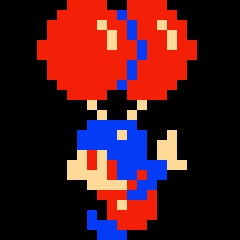For example, in English, you might type something like:
r u going out 2nite?
Instead of:
Are you going out tonight?
How does that sort of thing work when texting in a logographic language? Is it just emoji city, or can they mix and match characters to make things more compact?
And similarly, is there a formal journalistic shorthand system that gets used when jotting down comments in real-time, e.g. in China, Korea or Japan?
Thank you kindly!
There are a few ways we do it in Chinese.
In mainland, people would sometimes just type the initials of the pronunciation of the character. For example, hhhhh (哈哈哈哈哈, hahahahaha), sb (傻逼 sha bi, dumbass). It can get out of hand for people who are not super familiar with their vocabularies (like me, a Hong Kong Cantonese speaker)
Alternatively, one can just use a different dialect/version of Chinese. In Hong Kong, we can have both written Chinese and spoken Cantonese mixed in the same message. We simply pick which one of them gives a shorter version of the word. For example, 回家看看有無撞其餘活動 ([Written] Go home and see [Spoken] if it conflicts with other events). Sometimes we even mix in ancient Chinese.
Isn’t there also shorthand where you just write the base components and people understand what you mean because even though the radicals are missing, the core meaning of the glyph is still close enough?
The difference is that the shorthand isn’t based on phonetics but on the core meaning of the calligraphic strokes.
It’s why Japanese writers can communicate with Cantonese speakers through quick strokes on their palms. The radicals are all different but the base components are the same.
Similar to a German person stripping back words to core syllables.
Yes. For example in Chinese underground metro is 地下鐵路 roughly “ground under metal road”.
The shorthand is 地鐵, roughly “ground metal”. And everyone understands that as the metro.
how easy is it (e.g., number of key presses) to get 鐵 on your keyboard? it looks massively complicated, I’m counting like 22 strokes or so
There are different input methods. I use phoenetic one so I only have to type 3 letters and select the character.
There is also “quick” input method which you only need to pay attention to 2 parts of the character when you type, then it gives you a selection of the most likely characters.
Oh, boy, do I have a Radiolab episode for you! “The Wubi Effect”
oh boy!
sb (傻逼
Rename someone’s phone “SB250” for the lulz.
First things that comes to mind: Japanese for “to laugh” is 笑う “warau”. The equivalent of “lol” then started as 笑. Over time it evolved into just the first Latin letter “wwwww”. Which kind of looks like grass. And because Japanese people love word play, logically the next step was 草 “kusa” - which means “grass” and now also “lol”.
Anyway, sentences in languages that use logograms, such as Japanese, are generally shorter since they just use one character where languages that use Latin letters need several (“Want to hang out tonight after school?” - 授業後今晩遊ぼう?). So standard text message character limits are plenty to convey A LOT of stuff in Japanese. (EDIT: See comment below about the quality of that Japanese sentence lol)
You can make sentences more compact if you want to: 今晩 遊? is not a complete sentence but the essential parts that carry the meaning, “this evening” and “hang out”, are there so if you’re in a hurry that’ll do.
Going further back in time might be more interesting, the Japanese did some crazy shit with pagers: https://www.japanesewithanime.com/2018/02/spelling-words-using-numbers.html
(“Want to hang out tonight after school?” - 授業後今晩遊ぼう?
Minor nitpick: 今晩 is a pretty formal term; 今夜 is used instead in everyday conversation. Also in Japanese you’d only specify the moreimportant of the two timeframes, either “tonight” (今夜/夕方) or “after school” (授業終(が)終わったら), not both
lol fuck, I knew someone would call me out on my rusty Japanese. Thank you!
deleted by creator
Note to self: gain a few pounds.
Ok, so it seems like the need to shorten messages is an English problem.
On the other hand, there are languages that use conjugations, prefixes and suffixes extensively, and that changes everything. Suddenly, you can just add a few letters to include the equivalent of a few words.
I learned Mandarin in school when I was a kid before immigrating to the United States, I wanna answer this question, but confused on what you are actually asking about.
But there are some examples I can think of on top of my head (which were learned later on, not in school):
中国共产党 = Communist Party of China
Which shortens to:
中共 which in English would be “CPC”/“CCP”
中 is from 中国 (China), and 共 is from 共产党 (Communist Party)
中华民国国军 (Republic of China Military) --> 国军 (National Army) which refers to the military controlled by the Kuomingtang
In Taiwan:
民主进步党 --> 民进党 (Democratic Progressive Party --> DPP)
I’m unaware of any “you --> u” short hands.
In my household when the minute hand is pointing at 3 (15 minutes), its referred to as 三个字, 字 meaning character.
So for example, if its 12 PM and you have an appointment at 1 PM, and travel takes half an hour, then my parents would say to leave by “五个字” (“Five Characters” aka: when the minute hand points at 5 on the clock, which is 25 minutes)
So basically instead of telling to leave by 十二点二十五分 (this phrase has 7 syllables), its 五个字 (this phrase now has 3 syllables, much shorter)
I’m not sure if this term is universal or just my household being different.
I think many Chinese people don’t type text, usually my parents and the older generation aren’t good with typing pinyin and just leave voice messages (on Wechat). Idk what the younger generation does, since many of the younger Chinese people I’ve ever spoken to are Chinese Americans who grew up here.
When gaming online, Chinese players sometimes type “99” or “9898”, and I learned it means “go! go!” or “let’s go!”
I know for sure Korean does this, though technically their writing system is a syllabary. Symbols representing vowel and consonants are arranged into blocks that represent a syllable.
For example ㅈㅅ is short for 죄송합니다 meaning “I’m sorry”. Talk about efficient shorthand! The first consonants of each syllable block are used to makeup the shorthand, the ending 합니다 is a polite conjugation which is ignored in shorthand. You can look up “korean texting slang” for more. It’s apparently used a lot. The shorthand some might already be familiar with is ㅋㅋ which is “lol”.
ㅋㅋ which is “lol”
Gamers may be familiar with “kkkkkk” because that’s what you’d type on a keyboard to get ㅋㅋㅋㅋ :D
Edit: Gawwwd don’t listen to me today. This isn’t exactly correct. And I struggle to explain transliteration. Basically, the character ㅋ corresponds to “k”. I need sleep.
So THAT’S where that comes from!!!
Damn, I don’t have an answer, but that’s a fucking great question. I had just assumed it would be the case, but never thought to ask about it.
It’s difficult 2 transpose what u can do in English just 2 other languages written in the Latin alphabet for centuries. English has a remarkable and quite confusing amount of homophones that is absent from other indoeuropean languages. The apostrophe as a letter skipped marker is fairly universal. But beyond that it’s already a different ball game in other more similar languages. 2 to too, 4 for, r u - that’s very English only.
Simplified Chinese characters are a hint at what they did on the Chinese mainland to cut down on writing time. Beyond that (and I don’t speak the language so 🧂) there are single character abbreviations for countries. 美国 is America and 美 suffices as shorthand, which means beauty otherwise. Your example phrase is “R u coming 2nite?” In English we use the present progressive tense here, which doesn’t exist like that in Mandarin. It would be phrased as “Come tonight?” The question mark could be replaced with the character that functions as a question marker by itself. And I think you can do this in 3-4 characters and I think they might just beat you to it in a bilingual texting competition in terms of speed.
The mainland population may also be more adept to obfuscate their speech especially online. So similarly pronounced character combinations take over the meaning of a term the censors are actively looking for.
The Japanese like shortening stuff, mostly loanwords, to unrecognizable words. The word for part time work is アルバイト (arubaito) taken from the German for work (Arbeit). Cool kids have whittled it down to baito. A remote control has become a リモコン (rimokon) in normal parlance. Overly long Chinese character combos like 自動販売機 for a vending machine get shortened to 自販機 dropping characters that can be inferred (if you speak it).
I also want to add that text speak is heavily influenced by restrictions on text length and charges for each text. Non Latin script characters take up more than one Latin character per Chinese character for instance. It’s probably 5+ in decoding per character. So you reach 160 letters quite quickly and that’s why SMS in China was very cheap and quickly adopted a system where message threads would be sent and put back together on the recipient’s phone. In Japan they used email from the start, even in dumb phone T9 texting days. They had no Twitter-like restrictions on text length so they didn’t need to be shorter than what their thumbs could successfully fumble together.
I remember reading somewhere that Japanese schools girls started to write hearth shape into their symbols because it felt cute, it got out of hands at the point that teachers were obligated to banish hearth into schools
Those schools are heartless!
I’m still learning, so I don’t know the language well enough to give you examples. One of the things I’ve seen is using single Latin characters as replacement for Chinese characters that are homophones. This is often seen when writing things out in dialects that have unique words that don’t exist in the Mandarin writing system.
It’s already shorthand, no?
r u going out 2nite?
Before t9, this could save time. After t9, it was needless and tired. In my circle, now, we call that kid-pidgin.
T9 was a mid-'90s thing. We are now closer to a 3c warming target than we are to pre-T9 texting.
I just see it as how words shrink over time turned up to 10. Like how"God be with ye" changed to “goodbye”, Gen Z turned “Charisma” to “rizz” (char - ris - ma)
Do you read any social media with Gen z? Shorthand is alive and well, it just changed how it’s shortened.
[disables auto caps]
bro rq wyd tn finna slide by in min fr fr ong v gd story
Brother real quick what’re you doing tonight, fixing to slide by in a minute for real, for real, on god very good story











